In the blazing heat of the
Pilbara, some 36km south of
Marble Bar in WA, in desolate semi-desert spinifex country, there can still be seen a few scarce remains of one of the best-kept secrets of Australian involvement in World War II.
The heavily camouflaged and carefully hidden No. 73 Operational Base Unit was known as Corunna Downs - the name of the still-active cattle station on which the base was located.
The long runways built to handle the heaviest four-engined bombers of the day remain - partly overgrown. It seems slowly but surely they are being reclaimed by
the desert.
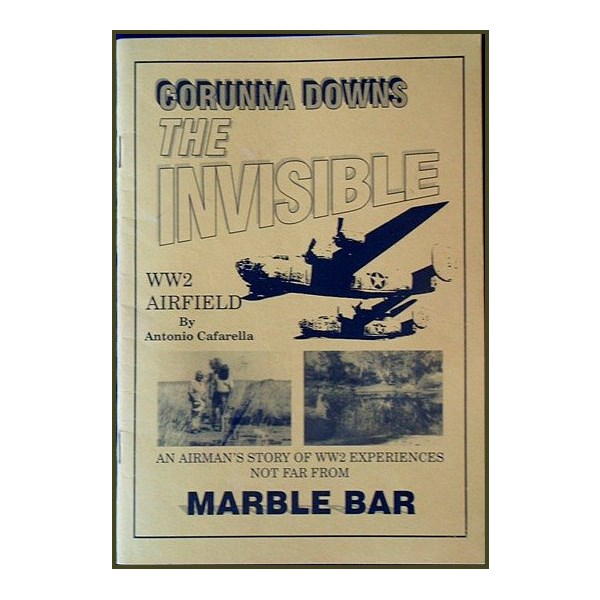
Corunna Downs, The Invisible Airfield
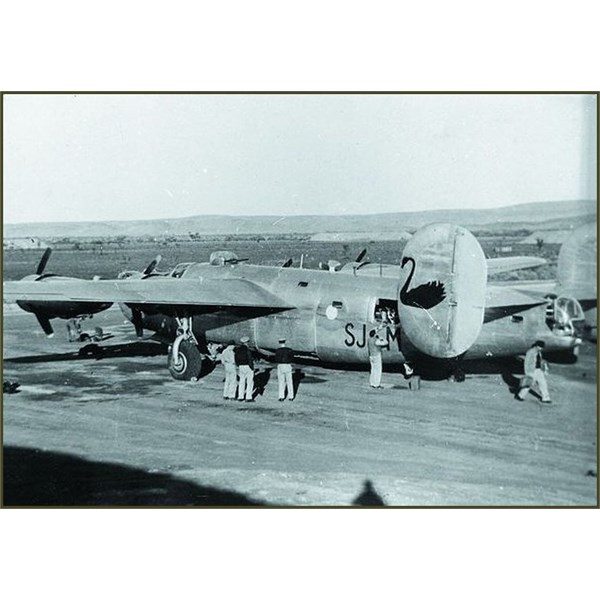
1943, view past the B-24 'Black Swan' Liberators, across the Corunna Downs Complex
The main runways, measuring 1650m and 2300m long and each 50m wide constructed with bitumen surfaces, are now cracked and parched from exposure to the relentless sun out here and are pretty
well covered with sand. In addition there were some 6km of taxiways now almost indistinguishable. A third 2000m runway was apparently planned but never built.
This is harsh, unforgiving country with nearby
Marble Bar recognised as Australia's hottest town - certainly not a great place to be working in the pressure conditions of a WWII air base. In addition it is reported that servicemen out here were tormented by flies, scorpions and snakes.
A visit to this lonely centre today in our modern air- conditioned vehicles is much more enjoyable but somewhat eerie, with the piercing call of an occasional crow the only noise that disturbs the vast silence.

3 Pratt & Whitneys ready for testing at Garbutt Qld
Of course, in this remote area, things were not always so deathly quiet, particularly as the regular roar of the four 1200hp Pratt and Whitney engines of the long-range B-24 Liberator bombers wheeled at the end of the runway and paused before commencing their take-off run, heavily laden with bombs to pound Japanese bases on Java, Borneo, Celebes, Singapore and other island targets to the north of the Australia.
In its time it was quite a noisy, bustling place to be. Today, in its peaceful serenity, visitors can only imagine the activity all those years ago.
In this remote country, where the many buildings required for the administration and operation of this little-known but major air base once stood, only a few crumbling concrete foundations can now be seen. What remains of an old windsock pole still stand defiantly near the degraded runways and the earth-formed aircraft bunkers, once covered with camouflage netting and spinifex to hide the planes, can still be seen scattered across the base.
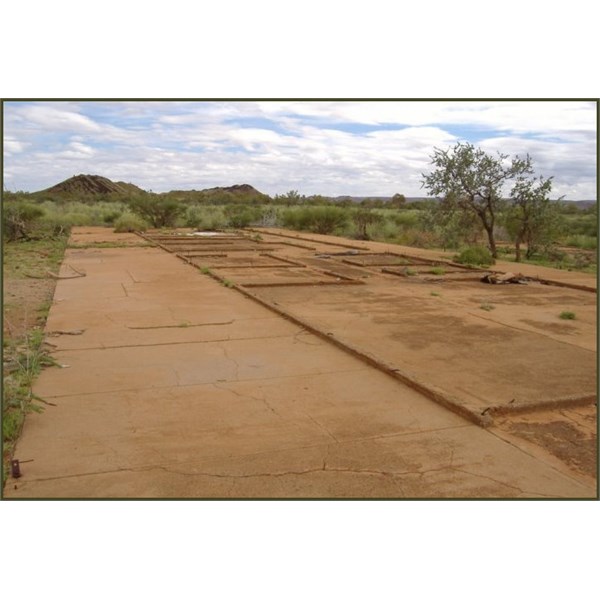
Remains of an WW2 airbase at Corunna Downs

Signpost to the Corunna WWII Airbase RAAF OBU73
Each of the 20 or so horseshoe- shaped bunkers housed one of the giant bombers, which were tucked away in them after each flight and where maintenance, refuelling and re-arming were carried out.
It is interesting to see how the bunkers (or revetments) were spread far enough apart to minimise damage to the aircraft if the base was ever bombed.
Elsewhere there are small piles of rusting fuel drums, ammunition containers, bomb holders and many other wartime scraps. It is believed all old live ammunition has been cleared away but visitors should be careful they don't stumble over any that may have been missed. After all this time such live rounds would be very unstable and dangerous.
There is a lonely grave at the foot of an ironstone hillside with a small
plaque identifying it as the final
resting place of RAAF Sgt Ernest Newton
Cook (46603) who died out there in a motor vehicle accident on December 5, 1944.

Ernest Newton Cook
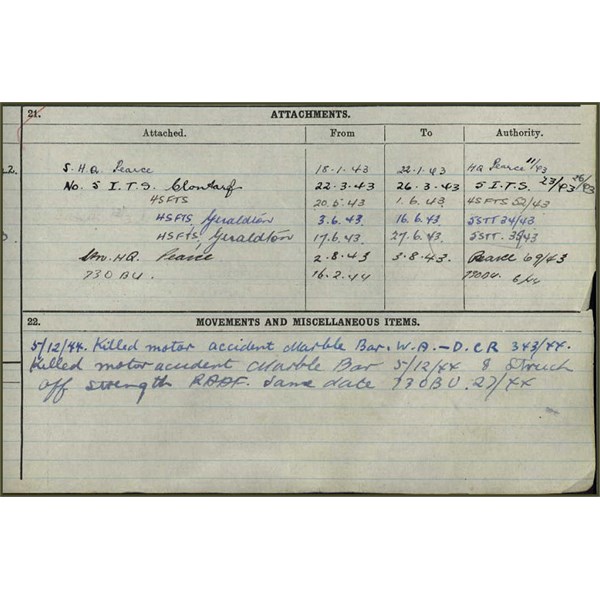
Accident Report
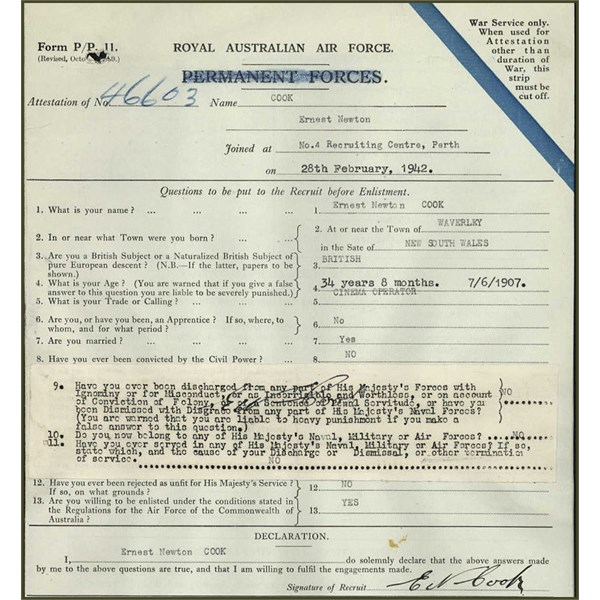
Ernest Newton Cook's Recruitment Form
NEWTON
COOK Ernest Newton - 46603 RAAF; Year of death - 1944;
Cemetery -
Geraldton War
Cemetery, WA
Bombing mission activity from Corunna hit its peak between 1943 and 1945.
On this almost forgotten spinifex and ironstone countryside, Australian and American air force units (the 30th bomber group of the US Air Force and No. 25 Squadron of the RAAF) blasted the Japanese bases that threatened Australia as
well as harassing the enemy shipping which was so vital to Japanese supplies and troop movements.
At any one time some 300 men were based here, living around the airfield in tents in temperatures which sometimes soared to about 50C - harsh conditions indeed.
Although bombers could reach Japanese targets from other northern bases around
Darwin, such flying took aircraft over a number of islands which had been taken over by the Japanese. The base at Corunna Downs gave aircraft the advantage of surprise, approaching their targets from over the sea.
It had always been feared the returning bombers may be followed and the location of the base discovered but this was apparently never attempted.
No mention was ever made during the war of these highly secret operations in press or radio reports and every effort was made to keep from the Japanese any knowledge that Corunna Downs airfield existed.
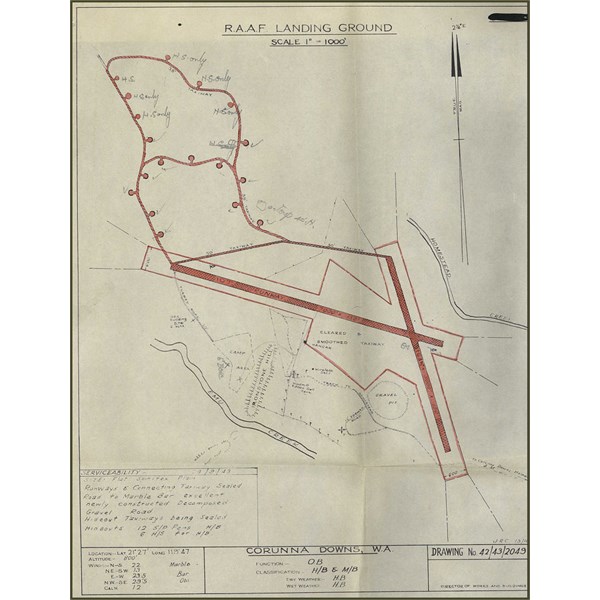
Corunna Downs Airfield map, showing Taxiways
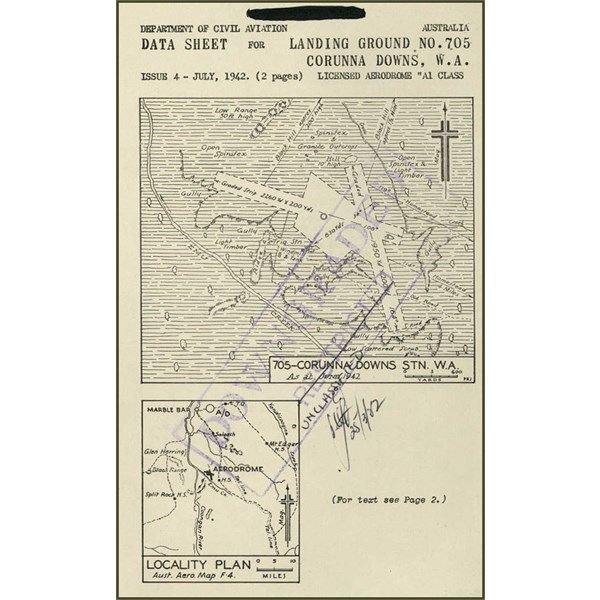
Landing Ground No 705 , Corunna Downs
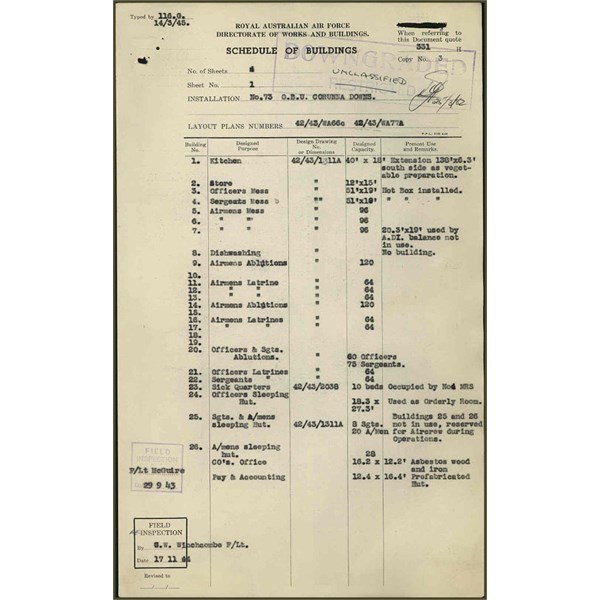
Schedule of Buildings
Japanese reconnaissance aircraft however, searched extensively for a base which they knew must be somewhere but their continual scouring always ended in failure.
The Corunna base was officially closed on January 14, 1946.
Even today the importance of the base and the part it played in the latter phases of the war has received little publicity and is largely unknown, even to the many tourists who pass through the nearby centre of
Marble Bar each year.
The working life of airmen on the base in the 1940s was harsh and trying. They had minimal facilities, including no air- conditioning or refrigeration. Rations mainly consisted of tinned vegetables and cans of bully beef.
Their
water supply (from a brackish
bore) was so hot showers were impossible until the pipes cooled down about 9pm. Their four- man tents were basic and living here was particularly uncomfortable in the heavy rains of the annual wet season. Their only real respite from the conditions was an occasional leave visit to the amenities in nearby
Marble Bar and the introduction in 1944 of an open- air picture show at the base. However, morale remained high as the airmen realised the important contribution they were making to the war effort from their proudly secret but successfully operated air base.

Google Earth view of Airstrips and Taxiways
The Australian Army was much in evidence at the Corunna Downs base during the war providing most of the supply transport as
well as its involvement with light and heavy anti-aircraft guns strategically located around the airfield.
The signposted access road (Corunna Downs Station Road/Salgash Road) to the
old Corunna Downs Air Base (36km from
Marble Bar) is all gravel, usually in quite good condition (except after rain) and can be travelled with care in conventional two- wheel-drive vehicles. Along the way (through old gold and copper mining areas and undulating, spinifex covered hillsides) there are a number of small creek crossings and parts of the road can be a little eroded. The trip is generally OK for off-road caravans or camper trailers but, as there are no facilities and the old base is on the privately-owned Corunna Downs cattle station, permission to
camp must be obtained beforehand. Preferably use
Marble Bar as a base and make a daytrip out to the air base.
An interesting exercise to help get your bearings before you actually go, is to
check on the internet - Google Earth - at 21C125'53.79"S, 119C146'56.73"E - where all the main features can be seen.
Check with the
Marble Bar visitor information centre (located in the local shire office) for road conditions and any access restrictions at the time (or ring Corunna Downs on 9176 1051) before heading out to the old base. Allow approximately one-hour travelling each way from
Marble Bar.
Additional information on Corunna Downs Air Base (plenty of photos and air base memorabilia) is available at the
Comet Gold
Mine and Tourist Centre, a few kilometres out of
Marble Bar township.
.